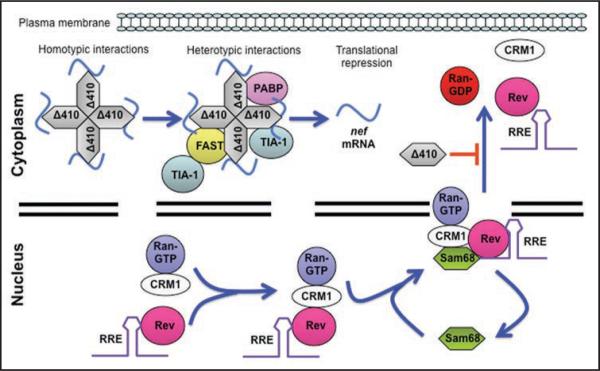Figure 1.
Sam68 function in HIV-1 gene expression. (A) Cytoplasmic regulation of HIV-1 gene expression. Overexpression of cytoplasmic Sam68-NLS mutants initiates nucleation of RNA-containing granules through homotypic interactions involving the RG-rich domain located between aa residues 269 and 321. Small primary aggregates are then formed and further cross-linked by direct or indirect heterotypic interactions between these mutants and SG core components such as TIA-1 (unpublished), FAST 30 or PABP-1,31 to generate larger secondary aggregates, followed by recruitment into mature SG. As a result, specific mRNA targets of these mutants, i.e., nef mRNA, are then brought into and enriched in the SG and made unavailable for translation. In addition, overexpression of these mutants inhibits Rev-mediated exportation of intron-containing RNA. (B) Nuclear regulation of HIV-1 gene expression. Rev, RRE-containing RNA, CRM1 and RanGTP form a complex in the nucleus in a Sam68-independent manner. Sam68 then associates with the complex via direct binding to Rev and transports the complex to the nuclear pore complex (NPC) and docks the complex onto NPC through CRM1 interaction with nucleoporins. Translocation of Rev, CRM1 and RRE-containing RNA into the cytoplasm leads to the release of Sam68 into the nucleus.

